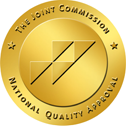Content Reviewed by Cameron Bolish, M.Ed., CEO
Stimulants, also referred to as “uppers,” speed up the body’s internal systems. In general, they increase attention and alertness. Recreationally, stimulants may be used as a study aid or party drug. Although prescription stimulants have their place in managing certain health conditions, the use of both prescription and illicit stimulant drugs can lead to problematic physical and mental health outcomes.
It is crucial to be able to identify stimulant drugs while understanding the effect that they have on the mind and body. It is also vital to recognize how quickly prescription substances can become substances of abuse and to know when and how to access treatment.
Identifying Prescription Stimulant Drugs
There are prescription and illicit stimulant drugs. Prescription stimulants, known as amphetamines, are medicines typically used to treat attention-deficit hyperactivity/disorder (ADHD) and narcolepsy, which are uncontrollable episodes of deep sleep. Some of the most common brand names of prescription stimulants include:
- Adderall
- Ritalin
- Concerta
- Dexedrine
Identifying Illicit Stimulant Drugs
Another stimulant drug is cocaine. Although medically, it may serve as a local anesthetic, cocaine is more widely understood to be an illicit street drug. With street names such as coke, crank, white and powder, cocaine is composed of white, crystalline powder derived from coca leaves. Cocaine is most commonly administered by inhalation through the nostrils, otherwise known as snorting or sniffing. When powder cocaine is smoked, it is known as freebasing. Additionally, the drug is often transformed into a solid, rock-like form known as crack or rock. This form of the drug occurs after the powder is cooked and is smoked by users through a pipe.
Khat is another illicit stimulant drug that is made from the leaves of an evergreen shrub. It is consumed through tea or chewed as a paste. It is known to produce manic behavior, along with other effects such as hallucinations, paranoia and cardiac complications.
Methamphetamines can be prescription medicines used to treat obesity and ADHD, although they are more commonly known as recreational drugs. Also known as crystal meth, methamphetamine is a powerfully addictive stimulant drug. Crystal meth resembles glass fragments as an illegally altered version of prescription methamphetamines. It may be snorted, injected or consumed.
General Effects of Stimulant Drugs
Stimulant drugs have varying effects. Since they speed up messages sent between the mind and body, they can cause an individual to feel energized. They do this by reversing the effects of fatigue, both physically and mentally. Some short-term effects of stimulant drugs include:
- Increased alertness
- Increased attention
- Increased energy
- Loss of appetite
- Increased blood pressure
- Increased heart rate
- Narrowed blood vessels
- Increased blood sugar
- Dilated breathing passages
When stimulants are used frequently or repeatedly, they can cause long-lasting health consequences. Withdrawal symptoms may include depression, tiredness and insomnia. However, long-term effects can include:
- Heart problems
- Anger
- Psychosis
- Paranoia
- Dizziness
- Headaches
- Chest pain and palpitations
- Excessive sweating
How Are Stimulant Drugs Abused?
Prescription stimulants most commonly come in tablet or capsule form. When an individual takes their prescription for a purpose that is inconsistent with medical guidelines, it is known as substance misuse. Misuse of prescription stimulants occurs when an individual:
- Takes their medication in a way or dose other than prescribed
- Takes someone else’s medication
- Takes medication to “get high”
Over time, the use and misuse of stimulant drugs alter how the brain works. Regular use of these substances can quickly lead to addiction, characterized by compulsive drug-seeking and drug-using behavior. This likelihood of addiction is why it is crucial for individuals prescribed stimulant drugs to take their medication exactly as it is prescribed.
Treatment for Stimulant Misuse and Addiction
Contrary to popular belief, an individual does not have to wait for a stimulant addiction or dependency to develop to qualify for addiction treatment. Often, individuals struggle with stimulant misuse and are in the beginning stages of addiction development when seeking treatment resources.
The right treatment program can help individuals struggling with stimulant misuse no longer rely on stimulants to go about their daily lives. When it comes to addiction, it is essential to understand that effective treatment will take time. Recovery is a lifelong journey. For it to be successful, it must involve a complete mindset change and long-term treatment engagement, even years after completing a treatment program.
Behavioral therapies, such as cognitive behavioral therapy (CBT) and motivational interviewing can be valuable treatment interventions to help manage and treat stimulant addiction. These psychotherapy approaches help patients to become aware of how their thought patterns affect their behavior patterns and vice versa. CBT, in particular, helps to modify the patient’s situation regarding substance use and treatment and walks them through valuable ways of managing substance use triggers and stress.
Stimulant addiction can wreak havoc on an individual’s physical and mental health. It is essential to start treatment as soon as possible to achieve the best possible health outcomes.
Casa Palmera is a drug and alcohol addiction treatment facility that understands the struggle that stimulant drug use can have on a person’s life. We want to help you find peace away from your stimulant use and abuse. To learn about our treatment programs, contact us today.




